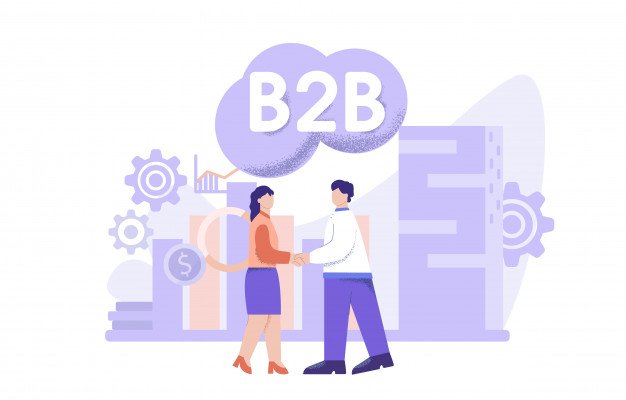Excerpt: Delivering email campaigns that perform exceedingly well requires effort and email audits help you get closer to better ROIs. Read on!
So half of the year has gone by smoothly (well, almost), your brand’s making money, your workflows are automated, and your email marketing campaigns are doing well. Wait, yes, pause at the last part of the sentence. Are they really performing optimally?
To get a clear understanding of the efficacy of your email marketing campaigns, no matter how great and well-automated they might be in your perspective, you NEED to run audits twice or thrice every twelve months.
If you meet an email marketer over drinks, they will probably have a lot to say about their KPIs and how the click-throughs are not making the cut. So how can one ensure that their email marketing efforts don’t go down the drain? The answer is quite simple indeed: execute email marketing audits to unveil your strengths and weaknesses, areas of improvement, and those that are doing just fine.
In the blog that follows, we will delve into the different kinds of email marketing audits that one can conduct and ways to go about executing them. Let’s get cracking!
The Kinds of Email Marketing Audits That One Can Conduct
In simple terms, an email marketing audit is a deep analysis of the various factors that contribute to the success of an email campaign so that you know what’s working and the areas that need to be tweaked.
The following are some kinds of email audits that you can carry out; each of them focuses on different facets of the email.
1. Email Content & Design Marketing Performance Audit
One of the most common kinds of audits, here you delve into your various KPIs (CTR, CTOR, etc.) to get a holistic understanding of the email campaign’s performance. The aspects that you need to look out for are:
- Subject line: Try to keep them personalized, crystal clear, non-sales, and within the range of 40-45 characters, optimized for mobile viewing. Please steer clear of spammy words such as “earn quick money” or basically anything that sounds too good to be true.
- Preheader text: It should be related to the subject line, albeit not repetitive.
- Header: First impressions are often long-lasting; cliched though that may sound, it does hold some weight. The header text next to your logo should be noticeable, clear, and in alignment with the brand ethos.
- Email copy: Grammatical errors and typos are a major turn-off. No wonder brands invest in the best copywriters to churn out good copy, even in the age of AI! Keep it crisp, clean and deliver maximum value in minimum words.
- CTA: The Call to Action buttons are the ones that can make or break the ROIs. Keep the design and text in tandem with the brand guidelines, easy to spot and click, devoid of broken links that lead nowhere!
- Graphics: When crafting an HTML or interactive email, ensure that the graphics render well across devices and the visual hierarchy is maintained.
- Conversions & Engagement rates: This is the litmus test of your email campaign. Are your emails good and engaging enough to keep subscribers interested, or are there more hits than misses? The KPIs should spill the beans on this one.
2. Email accessibility audit
When crafting your emails, if one overlooks the critical aspect of disability, you might fail to foster inclusivity with your campaigns, thereby risking losing the patronage of your subscribers. Keeping email accessibility in mind is absolutely essential, and is something that all email marketers should perpetually strive for.
- Ensure that there is no sensory overload for those with visual disabilities by keeping a simple and clean email layout.
- For those living with tactile difficulties, make the CTA buttons larger to ensure greater clickability and visibility across a range of devices.
- Remember to check for alt text in images to simplify things for users deploying the services of a screen reader.
3. Deliverability Audit
You might have the best of Salesforce email templates (or Hubspot; whatever rocks your boat) and check all the above aspects, but if your email campaigns fail to reach the intended inboxes, all your efforts will end up in vain.
To check for email deliverability issues, one needs to check the following aspects;
- Clean email list devoid of incorrect email ids
- Email Authentication
- HTML code failures
- Domain reputation
- Blocklisting
- Spam traps
- IP address
4. Compliance Audit
This would include checking the level of compliance of your email campaigns with the guidelines and requirements of CCPA, GDPR, PECR, etc.
5. Email Code Audit
Here, one would evaluate and carry out a code clean-up, fix bugs (if any), and ensure the incorporation of the best practices in email coding. One would also conduct tests to see how well the email renders across different email clients and devices.
6. Design Audit
In this kind of audit, one would review the emails from the design and aesthetics viewpoint and check how consistent the layout is with the branding guidelines. The different elements one would generally bring under the lens in this kind of audit are checking for the right use of white spaces, design patterns in accordance with the heat map, fonts, logo, layout, graphics, etc.
7. Automation Audit
Here, one would check automated email campaigns to see if everything is in order, such as API triggers, templates, links, rules, customer journey maps, etc.
One can either carry out all these audits or create a bespoke audit plan that includes permutations and combinations of the different kinds of audits mentioned above.
Steps For Conducting The Perfect Email Audit
Now that we are privy to the kinds of email audits that one can carry out, let’s move over to getting started with the process of what’s going well and what’s lacking in your current email campaigns.
Firstly, you need to begin with drafting a clear set of goals. Much like in other areas of life, the lack of well-defined goals in sight can very well be akin to sailing in a rudderless ship, and frankly, no one wants to be aboard such a ship!
You could begin by jotting down the kinds of audits you’d want to run on your existing campaigns and, based on the purpose of the audit, figure out your bespoke learnings and takeaways.
Then, you’d like to create a list of measurable Key Performance Indicators (KPIs) that you will be evaluating to check the health and effectiveness of your current campaign.
These may include:
- Unsubscribe rates
- Open rates (albeit not a very effective one as per Apple’s Mail Privacy Protection feature unveiled in the WWDC conference held on 7 June 2021)
- CTR (Click Through Rates)
- CTOR (Click To Open Rate)
- Spam complaints
- Conversions
- Email client & device assessment
You can create a spreadsheet to maintain a record of your audit. Here’s what you can document:
- Name of the email campaign
- Date deployed (not applicable in case of automated emails)
- Name of the audience segment
- Subject line
- Soft bounce rate
- Hard bounce rate
- CTOR
- CTR
- Conversion rate
- Unsubscribe rate
You can modify the contents of the spreadsheet as per your unique requirements. One can also diversify the main spreadsheet by adding tabs for different kinds of emails, such as promotional, transactional emails, etc.
Once you have your data in place, you can and should proceed with the data analysis. Begin with scanning all the metrics and specifically scrutinize those that fall on the extremities of the curve. The ones that did really well and the ones that missed the mark. Proceed with asking yourself the following questions,
- Are the subject lines and preheader texts enticing enough? Will I click on them if I receive them in my inbox?
- Is the visual hierarchy of the email in place, or does it look too cluttered?
- Does it offer a personalized experience to the subscriber?
- Does the email copy offer value to the reader, or does it appear too salesy?
- Does it cater to specific buyer personas and age demographic, or does it appear mass-produced with no specific target audience in mind?
- Is the cadence too annoying for the subscribers leading to higher unsubscribe requests?
- Are the CTAs visible, quirky, and enticing enough to get users to click on them?
- Are your emails accessible to users across the entire spectrum?
Wrapping It Up
While there are a number of tools available in the market to help you conduct email audits, and you can always request colleagues for a fresh eye perspective on your campaigns, if you’d rather have experts analyze the game for you, that’s possible too! Email Uplers will not only help you analyze your existing campaigns but also deliver interactive emails from scratch attuned to your specific needs. Do drop by for more information!
Read Also:






















